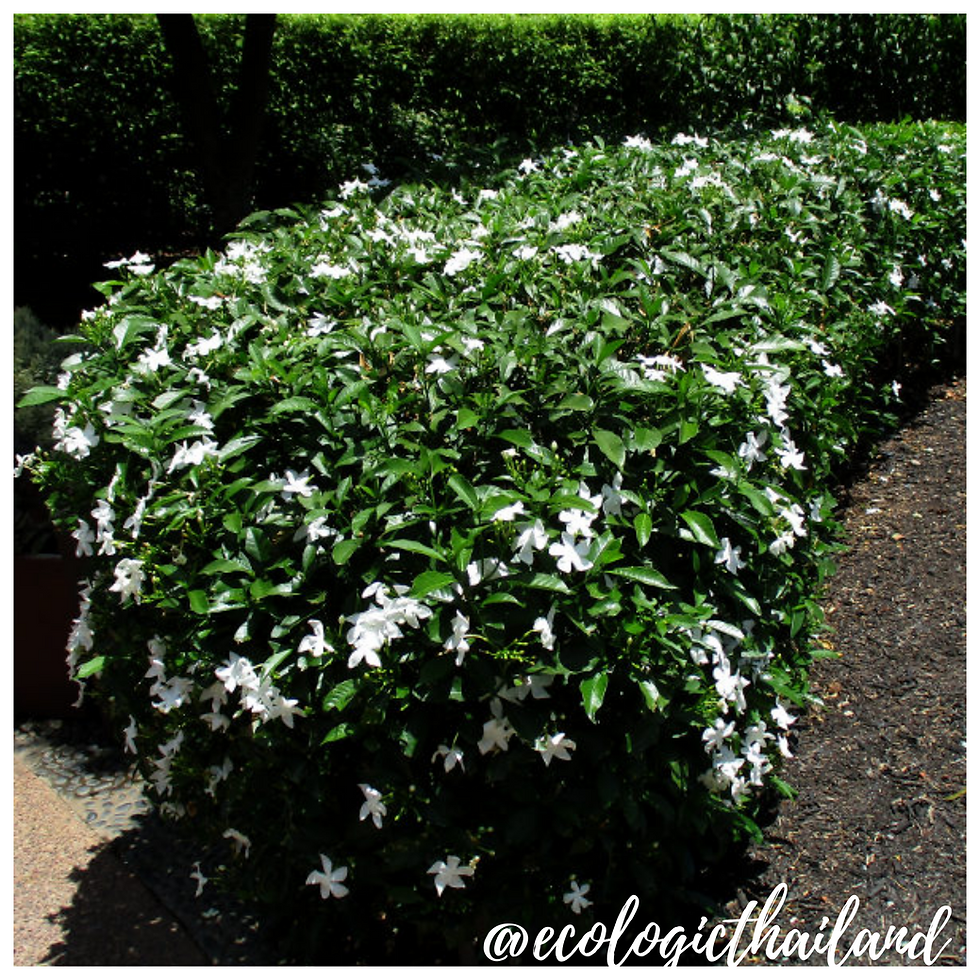Creeping Woodsorrel
- Eco-Logic Resort
- Oct 24, 2020
- 2 min read
Somdin | ส้มดิน | Oxalis corniculata
Family: Oxalidaceae - Genus: Oxalis

You will find this lovely creeper every where on the premises of Eco-Logic Thailand and the Thai Child Development Foundation
Often considered a pest, you will find the creeping wood sorrel every where in the area of the restaurant of Eco-Logic Thailand. It is very similar in look and to clover.
Wood Sorrel leaves, flowers, seeds, sprouts, and roots are all edible. They have a slight citrussy flavor, or as some guest remarked: green apple!
The leaves are available all year round.

THE PLANT
It is annual/perennial plant with a narrow, creeping stem that readily roots at the nodes. Wood sorrel can grow up to 15 inches tall but typically only reaches eight or nine inches.
The plant is hermaphrodite (has both male and female organs) and is pollinated by insects.

THE LEAVES
The trifoliate leaves are subdivided into three rounded leaflets and resemble a clover in shape. Some varieties have green leaves, while others have purple.
Each leaflet is creased along its midvein like a folded paper heart. The leaflets fold up at night and open during the day.

THE FLOWERS
Wood sorrel's five-petaled flowers are normally white or yellow although they can be pink or violet depending on species.
It can bloom any time of year.

THE FRUIT
Wood sorrel fruit, or seed pods, resemble tiny okra pods. They tend to be around 3/4 inches long, growing upright from their stalks.
The seed pods "explode" when ripe, sending their seed
CULINARY USES OF CREEPING WOODSORREL
The leaves of woodsorrel are quite edible, with a tangy taste of lemons.
It can be made into a herbal tea drink, eaten in salads (flowers and leaves) and even turned into a pesto.
The entire plant is rich in vitamin C.
NOTE!
Any woodsorrel is safe in low dosages, but if eaten in large quantities over a length of time can inhibit calcium absorption by the body.
NUTRITION
Wood Sorrel is packed with vitamins and minerals, including calcium, chromium, magnesium, niacin, phosphorus, potassium, thiamine, vitamin C, lecithin, vitamins A, vitamin E, B2 (Riboflavin), B3 (Niacin), iron, zinc, and selenium.
TRADITIONAL MEDICINAL USE OF WOOD SORREL
NOTE: please take advice from a doctor if you are planning to use herbal medicine.
Wood sorrel is used in the treatment of influenza, fever, urinary tract infections, enteritis, diarrhoea, traumatic injuries, sprains and poisonous snake bites.
The juice of the plant, mixed with butter, is applied to muscular swellings, boils and pimples
An infusion can be used as a wash to rid children of hookworms.
The plant is a good source of vitamin C and is used as an antiscorbutic in the treatment of scurvy.
The leaves are used as an antidote to poisoning by the seeds of Jimsonweed, arsenic and mercury
The leaf juice is applied to insect bites, burns and skin eruption
It has an antibacterial activity.
INTO THE WILD: a down to earth experience

For guests and visitors to Paksong we organize weekly tours "The Edible Forest" and Foraging weekends: Into the Wild. We work with local guides to take you in the jungle of Paksong. After foraging, we will cook a meal with the ingredients, using bamboo together with you!
Come and join and learn about the abundance of food that nature gives us!
INTO THE WILD!


















Comments